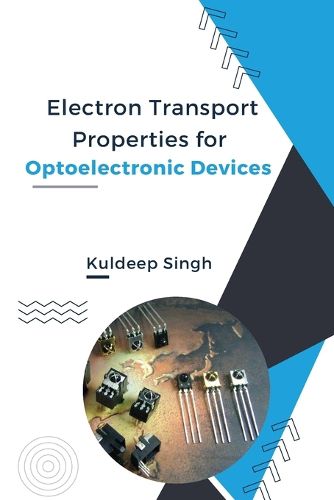Readings Newsletter
Become a Readings Member to make your shopping experience even easier.
Sign in or sign up for free!
You’re not far away from qualifying for FREE standard shipping within Australia
You’ve qualified for FREE standard shipping within Australia
The cart is loading…






This title is printed to order. This book may have been self-published. If so, we cannot guarantee the quality of the content. In the main most books will have gone through the editing process however some may not. We therefore suggest that you be aware of this before ordering this book. If in doubt check either the author or publisher’s details as we are unable to accept any returns unless they are faulty. Please contact us if you have any questions.
This is a comprehensive guidebook that covers the principles and applications of electron transport in materials for optoelectronic devices. The book starts with an introduction to the basics of electron transport, including the concept of conductivity, mobility, and carrier concentration. It then delves into the specific properties of materials that are used in optoelectronic devices, such as semiconductors, metals, and insulators. The author discusses the various techniques used to measure electron transport properties, including electrical and optical methods. He also covers the challenges and limitations associated with these techniques, as well as strategies to overcome them. The book then explores the use of electron transport properties in various optoelectronic devices, such as solar cells, light-emitting diodes, and photodetectors. The author describes the key components of these devices, including the materials used, device structures, and working principles. He also discusses the role of electron transport in device performance and optimization. Overall, "Electron Transport Properties for Optoelectronic Devices" provides a comprehensive overview of electron transport in materials for optoelectronic devices. It is an essential reference for researchers and graduate students working in the field of optoelectronics, as well as for professionals in industry who are involved in the design and development of optoelectronic devices.
$9.00 standard shipping within Australia
FREE standard shipping within Australia for orders over $100.00
Express & International shipping calculated at checkout
This title is printed to order. This book may have been self-published. If so, we cannot guarantee the quality of the content. In the main most books will have gone through the editing process however some may not. We therefore suggest that you be aware of this before ordering this book. If in doubt check either the author or publisher’s details as we are unable to accept any returns unless they are faulty. Please contact us if you have any questions.
This is a comprehensive guidebook that covers the principles and applications of electron transport in materials for optoelectronic devices. The book starts with an introduction to the basics of electron transport, including the concept of conductivity, mobility, and carrier concentration. It then delves into the specific properties of materials that are used in optoelectronic devices, such as semiconductors, metals, and insulators. The author discusses the various techniques used to measure electron transport properties, including electrical and optical methods. He also covers the challenges and limitations associated with these techniques, as well as strategies to overcome them. The book then explores the use of electron transport properties in various optoelectronic devices, such as solar cells, light-emitting diodes, and photodetectors. The author describes the key components of these devices, including the materials used, device structures, and working principles. He also discusses the role of electron transport in device performance and optimization. Overall, "Electron Transport Properties for Optoelectronic Devices" provides a comprehensive overview of electron transport in materials for optoelectronic devices. It is an essential reference for researchers and graduate students working in the field of optoelectronics, as well as for professionals in industry who are involved in the design and development of optoelectronic devices.